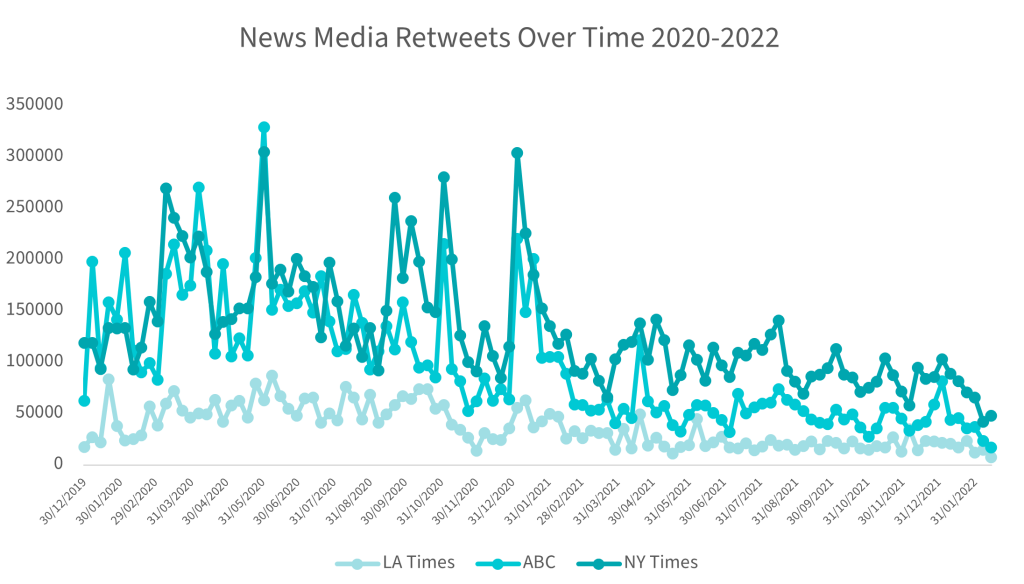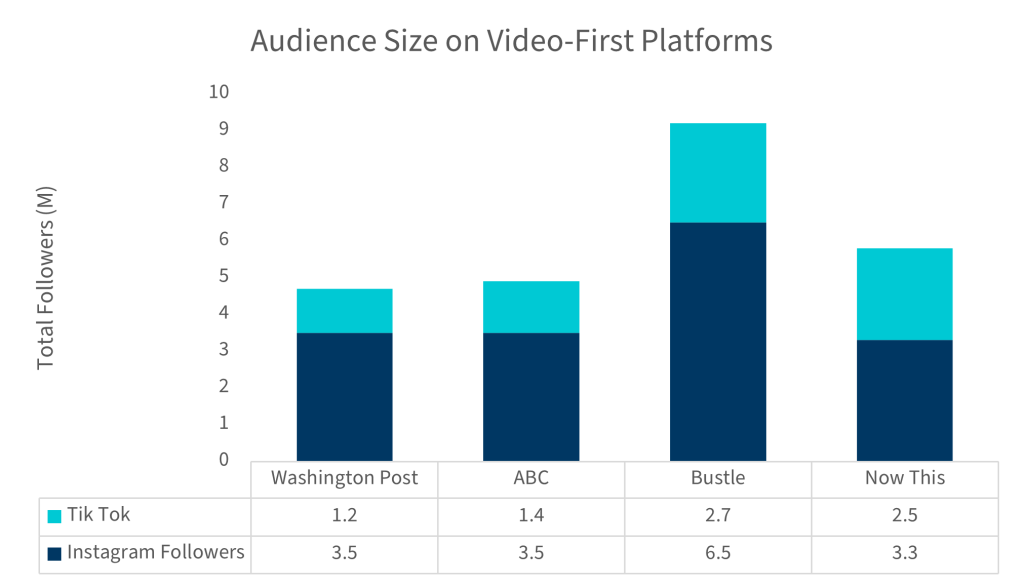Shifting Media Landscape and Communications Impact
Staying current on how to reach audiences in a constantly changing digital environment can be a challenge. Media outlets, built on capturing audience share, provides us a window in how to think about the use of owned channels and opportunities to establish new touchpoints with corporate stakeholders.
A Changing Media Landscape
Over the past year, the volume of mergers and acquisitions among media outlets across the globe has seen a 27% increase; in the Americas this is even more profound with a 36% surge in 2021[i]. This evolution and expansion of both legacy media outlets and digitally native platforms means more access to information across new channels and mediums, but also an increasingly fractured media ecosystem. New mediums, both independent and those supported by larger publications, continue to grow and gain traction among new audiences – diluting the dominance of traditional and legacy media outlets.
Twitter’s Media Foothold
Over the past decade, Twitter was able to secure a foothold as a go-to resource for news aggregation, a bridge between traditional and digital media. Even those who did not engage with long form news content could still browse headlines and trending stories, leveraging the platform’s capabilities to share news among their network and further the reach of the media outlets who were most visible on the platform.
However, the impact of Twitter has been diminishing. When looking at several of the most prominent news outlets, the rate at which their stories were shared on Twitter has declined significantly over the past 24 months.
News Media Retweets Over Time 2020-2022

Based on an analysis of Twitter data, The New York Times, home to over 50 million followers on Twitter, has seen retweet volume drop by 28.2% in 2021 compared to the year prior. Likewise, ABC has not been able to sustain retweets among their more than 17 million followers with a 45.7% decline in retweets in 2021. The Los Angeles Times has seen a 50.4% decline on this same metric.
Retweets are a key metric within analysis of the media landscape because of the impact on spreading information across a network, thus enabling new audiences to gain exposure to media coverage with which they might not otherwise engage. Retweets are also a favored form of engagement by Twitter’s news feed algorithm, making it more likely for tweets to be promoted to new users.
Uniquely, Twitter’s ability to share, and directly engage with news is not a uniform function across other platforms, where the degree of information sharing may be lesser, and more challenging to quantify. While still strong, estimated reach on Twitter has fallen by 5.6% in 2021 for The New York Times and 10.9% for The Washington Post – making way for other platforms such as podcasts, Substacks and newsletters.
Estimated Twitter Reach (2020-2022)

New Platforms, New Users
Legacy media outlets have not been naive to the lessening impact of Twitter; many have proactively established a presence on other platforms. Video-centric platforms like Instagram and Tik Tok have increased their contributions to the news media environment, going beyond culture and entertainment content.
While ABC has amassed 3.5M followers on Instagram and The Washington Post has 1.2M active followers on Tik Tok, digital-first media outlets also are increasingly present in this new landscape. Now, This is home to 3.3M followers on Instagram and 2.5M on Tik Tok; Bustle media claims nearly 10M followers between the two platforms, further encroaching on the stronghold legacy media once had.

Figure 1: Legacy Media publications are catching up to digital-first outlets
Beyond the news outlets themselves, the fragmented media landscape has created an opportunity for a new generation of journalists – able to establish their own followings. Bari Weiss, formerly of The New York Times, was able to bring her 400k+ audience to her own personal Substack channel. Dave Jorgenson of the Washington Post has become a Tik Tok star in his own right with an audience of over 21.5k personal followers.
Underscoring this trend is The New York Times, which rather than establish its own Tik Tok account has enabled the journalists on its roster to activate independently on the platform. This creates an opportunity for individual commentary, and more journalistic control and license for content publication.
So, What Does Changing Media Consumption Mean for Communicators and Organizations?
These shifts in media have diversified the touchpoints at which the public digests news and information, which in turn, has significantly impacted how companies and organizations must think about communications strategy from both a proactive and reactive standpoint.
Proactively, crafting a media strategy is always a challenge regardless of the objective. It is increasingly important now to take all touchpoints into consideration. This requires an in-depth understanding of audience and reader demographics. Knowing how to prioritize outlets and platform, and how that may cascade overarching narratives is crucial. For example, the New York Times readership may differ significantly from their social following, and within their social following, it may be further segmented across their various podcasts, newsletters, and other verticals.
From a reactive standpoint, media monitoring plays a vital role in informing strategy and situational assessment. Comprehensive monitoring capabilities which can assess the various touchpoints to determine sentiment and impact is necessary. Often this requires a dedicated team to comb coverage given the aforementioned changes in the media landscape. As video content and podcasting becomes more prevalent, so too becomes the need for advanced, and sometimes manual, analysis of content to best understand the context and tone of relevant mentions.
Finally, remember that we are in the midst of a significantly shifting environment, with much change left to come. Assessing the shifting media landscape and responding to emerging shifts will be critical in maintaining an effective communications function and developing strategies that deliver impact.
[i] https://www.pwc.com/gx/en/services/deals/trends/telecommunications-media-technology.html
| The views expressed in this article are those of the author(s) and not necessarily the views of FTI Consulting, its management, its subsidiaries, its affiliates, or its other professionals.
©2022 FTI Consulting, Inc. All rights reserved. www.fticonsulting.com |




